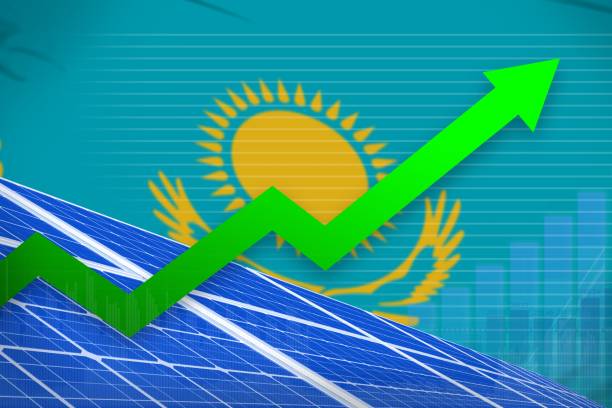
Homeowners, businesses, and other institutions are shifting toward renewable energy as the demand for environmental sustainability and accountability increases. This has seen lawmakers introduce legislation to help those who choose to change to renewable energy sources, encouraging individuals and companies to invest in different forms that use renewable power.
This legislation is as good as the Inflation Reductions Act (IRA). The IRA can help to help the United States reach its climate goals. Read on to learn more about the IRA and how it affects the solar industry.
WHAT IS THE INFLATION REDUCTIONS ACT?
The IRA was enacted into law on July 27, 2022. The IRA comprises about $369 billion for energy and climate-related spending. It provides government support for developing clean energy sources to move towards a sustainable energy system gradually. The bill is designed to accelerate the process of implementing clean energy technology development, reduce energy costs, build an energy sector that is reliable and focused on American technology and help reduce carbon emissions.
The ideal situation is that this bill, along with its provisions and credits, is designed to promote clean energy production at home in addition to more consistent innovations overseas. In addition, the IRA’s emphasis on communities with low incomes as well as the displaced would aid in creating an equitable, fair, and environmentally clean energy transition.
HOW DOES THE IRA AFFECT THE RENEWABLE ENERGY INDUSTRY?
The bill also provides tax credits and other provisions encouraging the shift to solar energy and better solar technology. Below are the tax credits and benefits available in the IRA:
Renewable Energy for America Program (REAP)
The REAP offers financial aid to organizations that wish to use sustainable technological solutions in remote areas. It helps the companies to get solar power where they may not have been able to previously. The following are the specifics:
It will provide $2 billion of funds until 2023. This will grant and guarantee loans to small-scale businesses, ranchers, and farmers in rural areas. This means they can invest energy or upgrade existing technology.
The federal grant share has been increased to 50 percent. The previous limit was 25%.
More than $300 million has been reserved to provide grants and loans for assistance for those not using renewable energy technologies like solar.
This program aids businesses to pay the costs of financing renewable energy. This allows them to invest in solar technology, which helps transition to energy independence and reduces the country’s carbon emissions.
New Clean Electricity Investment Tax Credit (ITC)
The current Renewable Electricity Production Tax Credit (PTC) expires in 2024, and the brand new PTC (48E) is set to take over its place. The PTC is based on emissions allowing consumers to select between PTC (45Y) and an ITC (48E). The specifications of both the ITC and PTC are as follows:
A PTC credit of 1.5 cents per Kilowatt of generated electricity produced by facilities operating after 2024, with zero harmful emissions. The PTC applies to electricity kept or traded. There are bonuses of 10% for projects that are located in communities with low income, energy communities, and those that satisfy specific manufacturing requirements for steel, iron, or other manufactured materials. A bonus of 20% is available to clean energy projects within homes with low-income or economic benefit projects.
Entities can reach acceptable emission levels through storage, carbon capture, and utilization.
The credits will expire after 2032 or when emissions goals are met. The first-year organizations can claim 100 percent. After that, they can claim 75% the following year, 50 percent in the next year, and so on until the amount reaches zero.
A new version of ITC and PTC comes with direct pay and transferability.
Modifying the tax credit will allow companies to benefit from this financial reward that encourages many to invest in solar technology. With the updated specifications and the addition of the PTC, facilities will profit from this tax incentive for a lengthy period, enabling them to increase their investment and encouraging further exploration and investment in solar technology.
Direct Payment Options and Transferring Credits
The IRA allows people with tax credits to sell the credit differently. They can direct payment (Section 6417) or move the funds to an additional taxpayer (Section 6418). We’ll discuss direct payment in the following section since it benefits people interested in exploring solar energy.
What Is Section 6417?
According to section 6417, tax-exempt organizations can receive direct payments in the amount of tax credit instead of trying to figure out ways to avail of the credit, despite being exempt from tax. Businesses can use direct payment to claim PTC, ITC, and credits under Section 48E and other honors.
Companies that want to take advantage of direct payment must decide to use it before the due date for their tax returns for the year during which the decision is made. This law contains information about entities’ procedures for dealing with direct payments. Remember that tax-exempt organizations eligible for direct payments will likely lose their eligibility, beginning at 100% in the first year and gradually declining each year.
HOW DOES THE IRA AFFECT NONPROFITS?
A significant aspect of the IRA is how it can positively impact charities. With this bill, organizations that want to put in solar and solar battery systems in low-income communities won’t face the same obstacles as before. Direct payment options are essential for organizations looking to take advantage of the ITC after installing modern solar photovoltaic (PV) systems and storage batteries.
